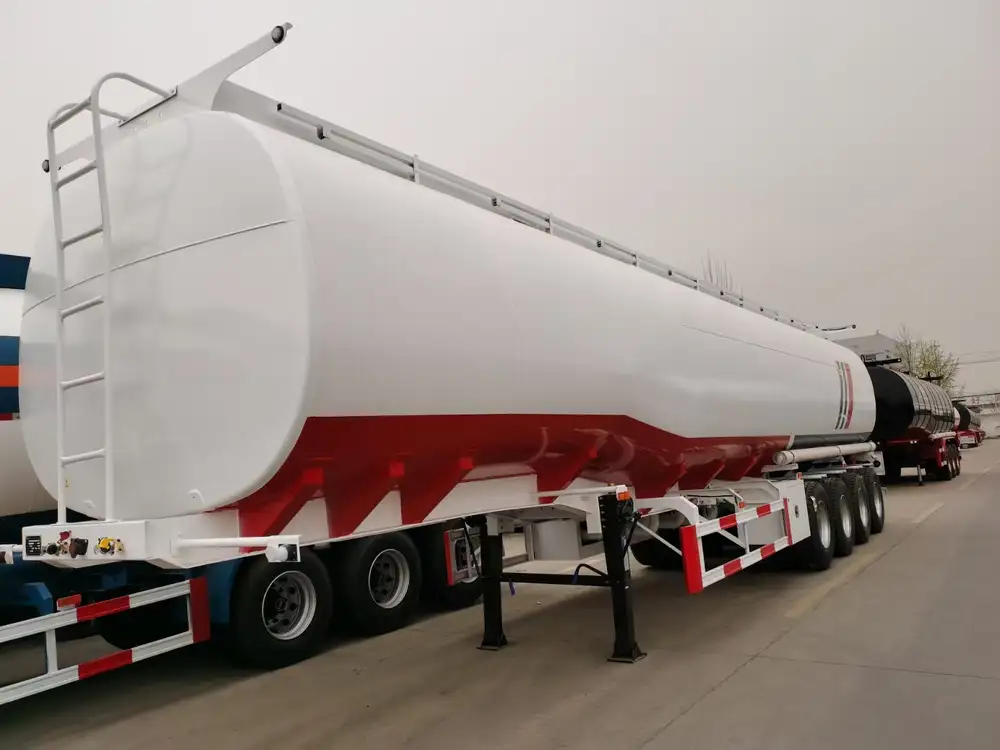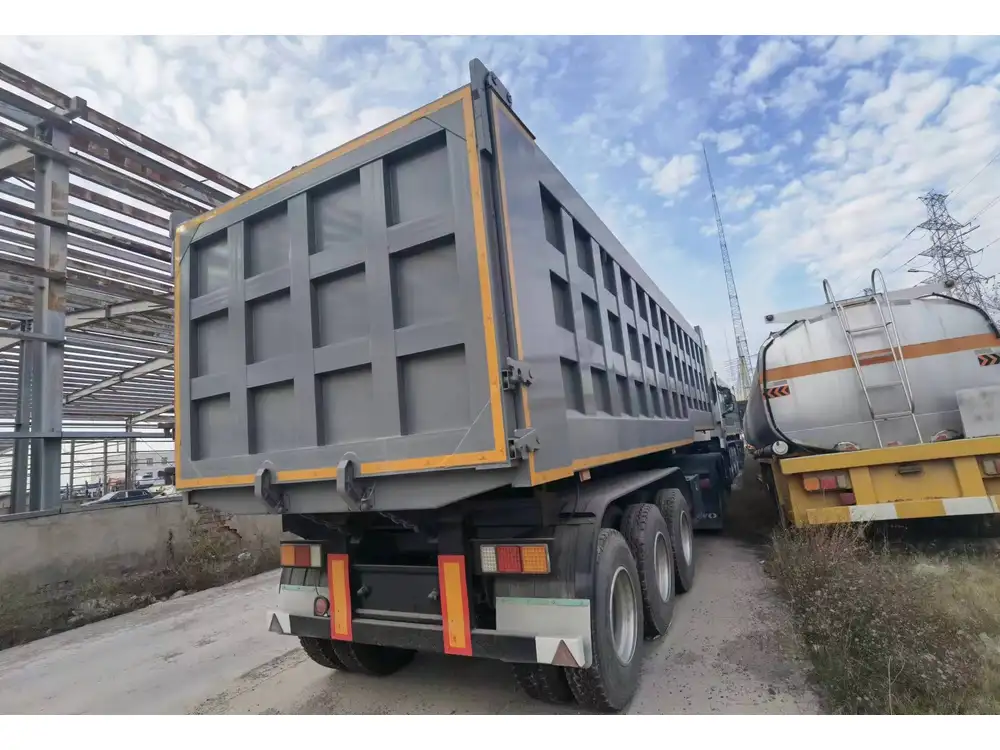Tarping a semi-trailer properly is crucial for ensuring the security and safety of cargo during transport. In this guide, we will delve into techniques, tips, and best practices to master the art of tarping. Utilizing a systematic approach will not only aid in understanding the process but also enhance the efficiency of your tarp application.
Understanding the Importance of Tarping
A semi-trailer tarp shields your load from adverse weather, dirt, and damage, ultimately safeguarding the integrity of the cargo. Whether you’re transporting equipment, construction materials, or perishable goods, a tarping system is essential for maintaining quality throughout the delivery process.
Key Benefits of Proper Tarping
| Benefit | Description |
|---|---|
| Weather Protection | Shields goods from rain, snow, and UV damage, preserving cargo integrity. |
| Dust and Debris | Prevents contamination from road grime and dust, especially important for sensitive loads. |
| Regulatory Compliance | Many jurisdictions require proper covering of loads to avoid fines and penalties. |
| Safety Assurance | Reduces the risk of cargo falling off, which can pose hazards to other drivers. |

Tools and Equipment for Tarping
Before embarking on the tarping journey, it’s imperative to have the right tools on hand. Here’s a checklist:
- Tarps: Made from high-quality, durable materials such as vinyl or polyethylene. Choose the appropriate size based on your load dimensions.
- Ropes/Tie-Downs: Essential for securing the tarps tightly over your load.
- Tarp Grabs: Useful for gripping the tarp securely and preventing slippage during transport.
- Ladder: For easier access to high loads, a sturdy ladder can help in achieving a proper tarp placement.
- Gloves: Protect your hands while handling long, rough tarps and securing them over loads.
Step-by-Step Guide on How to Tarp a Semi Trailer
Mastering the process of tarping can significantly impact the protection of your cargo. Here we outline a structured, step-by-step method to ensure you’re covering your load efficiently.
Step 1: Prepare the Cargo
Start by assessing the load on your semi-trailer. Ensure that the cargo is evenly distributed and adequately secured with tie-downs or straps. Proper load distribution helps prevent shifting during transit, which can compromise tarp security.

Step 2: Choose the Right Tarp
Selecting the right tarp is pivotal. Measure the dimensions of the load and select a tarp that is large enough to completely cover it while allowing for sufficient overhang. A tarp exceeding the load dimensions is preferable, as it allows for a better tuck-in and secure fit.
Step 3: Position the Tarp
Unfolding the Tarp: Lay the tarp flat over the load, ensuring that it covers the entire cargo area. Keep the tarp aligned to prevent any wrinkles.
Tarp Orientation: For loaded pallets, it’s often beneficial to start from one end. If using multiple tarps, overlap them to eliminate gaps.
Step 4: Anchoring the Tarp
Using ropes or tie-downs, begin securing the tarp.
Corner Tie-Downs: Start at one corner to create an anchor point. Make sure the tarp is smooth with no large pockets of air.
Lateral Securing: Move towards the opposing corner, securing the tarp in place by pulling taut as you go. Repeat this for each side.

Tips for Securing:
- Tarp Grabs: Insert tarp grabs to hold the edges in place effectively.
- Avoid Over-Tensioning: Ensure that while the tarp is tight, it’s not over-tensioned to the point of tearing.
Step 5: Final Adjustments
Once the tarp is secured, inspect the entire configuration:
- Check that the tarp is smooth and tight.
- Ensure that there are no loose edges which can be whipped by the wind, potentially loosening the tarp.
This stage may require adjustments in various parts.
Step 6: Safety Inspection Prior to Departure
Before hitting the road, always conduct a safety check:
- Tarp Security: Wiggle and pull at the tarp gently to check for any loose ends.
- Load Stability: Verify the load again to ensure nothing has shifted during the tarping process.

Common Challenges and Solutions in Tarping
Despite having a clear guide, challenges can arise during the tarping process. Here are some common concerns, along with effective solutions:
| Challenge | Solution |
|---|---|
| Windy Conditions | Wait for calmer conditions or use heavier tarps and tie-downs. |
| Tarp Damage | Inspect for wear before use and replace damaged tarps promptly. |
| Difficulty in Securing | Utilize ratchet straps or additional tie-downs for better leverage. |
| Tarps Slipping | Ensure proper usage of tarp grabs to secure edges effectively. |
Best Practices for Tarp Maintenance
A tarp is an investment, and maintaining it extends its longevity. Here are a few best practices:
- Regular Inspection: Routinely check tarps for signs of wear, fraying, or damage after every journey.
- Clean and Store Properly: After use, clean tarps to remove dust and contaminants before storing them in a dry location to prevent mold.
- Reinforce Edges: Consider reinforcing the edges of the tarp to prevent ripping at stress points.
Alternative Tarping Methods
While the above guide provides a traditional tarping method, there are alternative techniques worth mentioning, especially for specialized loads.

Cargo Nets
For certain types of loads, cargo nets can offer a level of flexibility that tarps may not provide. They allow for better airflow and can be used in conjunction with tarps for additional security.
Use of a Tarp System
Pre-manufactured tarp systems can be installed on semi-trailers for quick deployment. These systems can significantly reduce time when loading and unloading and provide uniformity in securing loads.
Conclusion
Tarping a semi-trailer may initially seem straightforward, but attention to detail can transform the effectiveness of the process significantly. By following the steps outlined and anticipating challenges, we can ensure that our cargo remains protected from the various elements encountered in transit. Remember, the right techniques and quality materials are essential for achieving optimal load security, ultimately leading to safer roads for everyone.
By investing time in mastering these methods, you can guarantee not just compliance with regulations but also the satisfaction of delivering goods in pristine condition. As we continue to optimize our approaches in tarping for semi-trailers, safety and quality should remain our top priorities.



